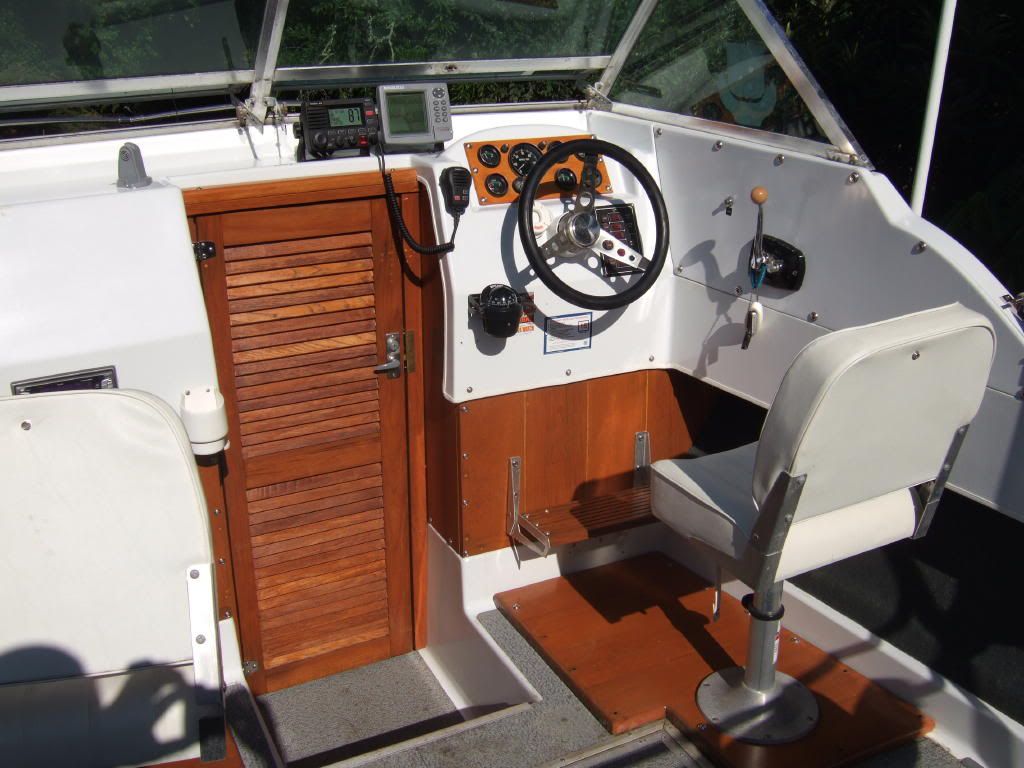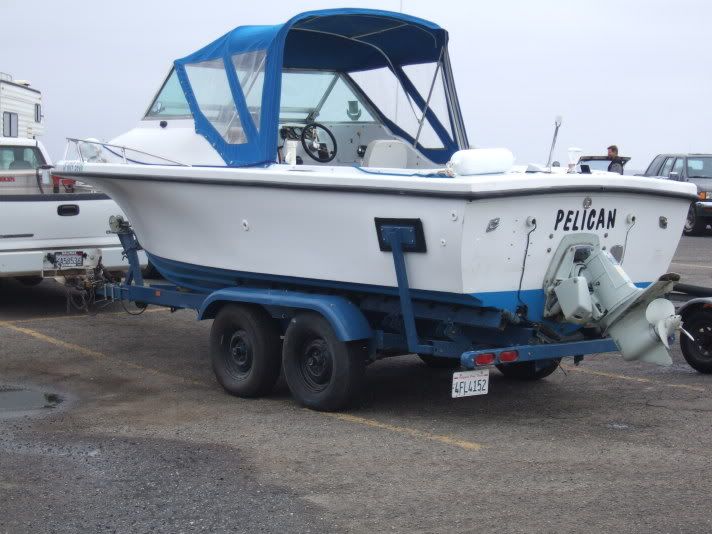I'm near Santa Cruz, California. The V20 is a kind of east coast boat and the Seabirds are escpecially. We're a kind of loner out here with this hull.
It seems to handle the rough water well. The trouble is, every time I go out it is REALLY rough. It's usually 5 foot swells and the last two outings were 8-9 footers. It kind of keeps the speed down but I was able to make 12-15 mph in the 8-9 footers without going airborn. The bow stays down pretty well if you get the motor trimmed right even without trim tabs. The boat does sit a little lower in the bow than most of the V20s I've seen pictures of. The biggest problem with the rough water handling is the prop. That ol' aluminum piece of junk just doesn't hold the water well in any condition. I'd like to get a stainless 4-blade, but nobody is making them for the older series outdrives. In quartering seas, the boat tracks pretty straight down to a couple of mph. My biggest complaint is when running with the swells. On the backside of a swell the boat really bogs down. The boat will slip off the backside and into the trough. Once on the flat water, the boat jumps on plane and races over the top of the swell and goes flying off the top and you land with a pretty hard thud in front of the swell. What is happening is, the transistion to plane is like 2 mph faster than the swells are usually moving. Once on plane, the boat races ahead of the swells. The boat is dry, I pulled my windshield wiper off because it wasn't getting any use. It sits pretty low in the stern on plane with the weight of its big motor back there, a 260 hp 350 Chevy. We sometimes get some spray that curls up around the sides of the boat and into the stern area because of this. Another reason I want a 4-blade.
The shape of the skin is the same, but the construction of the hull is different. The V20 uses a 1/2 inch of laminate to make the skin of the hull and then stringers to provide rigidity? The Seabird uses 1/4 inch of laminate, 5/8ths of an inch of balsa wood, and another layer of 1/4 inch to form the bilge. There are 2 stringers that run most of the length of the boat, they stop under the console, and none run transverse because the balsa core provides enough rigidity that they are not necessary. The hull sides are also cored with 3/8ths inch balsa and are 1/4" for the outer skin and 1/8th to 3/16ths of an inch for the inner skin. The deck is balsa cored, the console is balsa cored, the gunnals are balsa cored. The only plywood in the boat is the transom. All of this should make the boat light, but I think it is heavier than a V20.
The biggest difference I see in the shape is where the rubrail is. The Seabird is perfectly straight from stern to bow, the V20 is a little lower in the stern than the bow.




